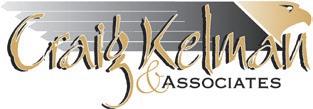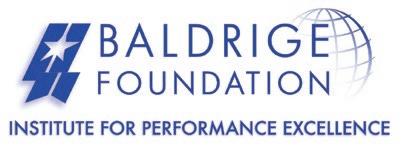Pooling

















































 By Pierre Hadaya and Tamara Highsmith
By Pierre Hadaya and Tamara Highsmith

Gain a competitive advantage from exposure to the best thinking and guidance in formulating, implementing, and executing winning strategies.
IASP is a non-profit professional society whose mission is to lead and support people and organizations through the promotion of a holistic approach to strategy management and by setting standards for strategy through thought leadership, professional development and certification.

Being a member of IASP Means –
• Opportunities to meet and learn from international strategy experts and network with peers across the globe
• Volunteer and collaboration opportunities with chapter and global committees and communities of practice


• Exclusive, member-only discounts on global conference, webinars, and educational opportunities
Membership levels range from individual to corporate group options. Visit www.strategyassociation.org and JOIN TODAY!





Definitions of the term theory abound in the literature. Whetten (1989) nonetheless remains one of the few authors that have articulated the key constituting elements of a theory. He describes and explains the building blocks through a metaphor based on the fundamental questions of the English language: what, how, why, where, when, and who. The factors (i.e., concepts, constructs, and variables) constitute the “what,” the “how” specifies the relationships amongst the factors, whereas the “why” explains the underlying psychological, economic, or social dynamics that justify the selection of factors and the proposed relationships. Finally, the “who,” “where,” and “when” identify the boundaries of a theory.
theory for change management, as well as the lean management theory have supported the strategic efforts of countless organizations of all sizes working in all sectors.
More importantly, theorizing (i.e., the act of devising theory) is essential to the work of every practitioner. Indeed, to my knowledge, there is no better way to address a problem than by describing the phenomenon, investigated through the use of the basic question words mentioned above. As a matter of fact, two of my mentors, Warren Buffet and Charlie Munger, have mastered the art of theorizing (the problems they try to solve) and for that have become two of the best managers alive today.
The mission of Strategy Magazine, “publishing theory-based practical


problems of today’s organizations, most effectively and efficiently. By doing so, we hope to fill an important gap in the business strategy literature. In summation, we believe that theory is a key ingredient to successful practice and as such are strong proponents of two important theory dictums, James Maxwell’s “There is nothing more practical than a good theory” and Kurt Lewin’s “There is nothing so useful as a good theory.”
This issue of Strategy Magazine comprises five quality articles on different topics related to strategy. The first article is the result of popular demand. Indeed, these last few years, I’ve been asked by several readers and colleagues to clarify the relationship that exists between strategy and culture but have never been able to provide a satisfactory answer. My associate editor, Tamara Highsmith, and I have finally made a first attempt to answer this question and our results are summarized in our article Pooling Strategy and Culture Together for Long-Term Success.
Theories that address problems facing a profession are thus of value for practice. By identifying the key factors that explain a phenomenon/ problem, the relationships that exist between them and more, theories represent proven, concrete tools for sound decision making. For example, the theory-based business model canvas devised by Osterwalder and Pigneur (2010), Kotter’s (1996, 2002)
articles to help executives, strategists, managers, and other professionals better formulate, implement, execute, engage, and govern strategies” is anchored on the essential role that theory and theorizing can play in practice. We are dedicated to publishing articles that rely on novel, valuable, testable and robust theory-based concepts, frameworks, or practices to address practical, strategy-related
In the second article, Maximizing the Strategic Benefits of AI by Establishing a Program, Glen Hilford defines what artificial intelligence is, identifies the common challenges faced by organizations during AI projects, exposes mitigation approaches to alleviate the challenges and, most importantly, introduces the concept of an AI program as a strategic differentiator to help organizations maximize the benefits from such a powerful and radical technology.
THEORIES THAT ADDRESS PROBLEMS FACING A PROFESSION ARE THUS OF VALUE FOR PRACTICE.
BY IDENTIFYING THE KEY FACTORS THAT EXPLAIN A PHENOMENON/PROBLEM, THE RELATIONSHIPS THAT EXIST BETWEEN THEM AND MORE, THEORIES REPRESENT PROVEN, CONCRETE TOOLS FOR SOUND DECISION MAKING.
In the third article, How to Effectively Plan for Digital Transformation, the seasoned academic and practitioner William Donaldson explores the strategic imperatives surrounding digital transformation and the common failure modes of existing strategic planning techniques as well as offer guidance for senior management to maximize their planning processes to harness the opportunities inherent in digital transformation.
In the fourth article, Critical Recommendations to Govern Your Strategy in a Holistic Fashion, our IASP president, Susan Radwan, defines and describes strategy governance and presents five recommendations organizations can deploy to reap the maximum benefit of holistic governance.
The fifth article, The Secrets the Toyota Model Revealed, was authored by journalist Julie Barlow and first published in Gestion, a French magazine that provides highquality articles in all areas of management, drawing its content from university


research and experience. This article gives a glimpse of how Isao Yoshino, senior executive for almost 40 years at Toyota, successfully implemented the highly acclaimed trademark management system, dubbed the Toyota Way. I’m grateful to the editor-in-chief of Gestion, Éloi Lafontaine-Beaumier, for giving us the authorization to publish this insightful article and giving us the support to translate it into the language of Shakespeare.
To conclude, I would like to thank all those that have contributed to the publication of this issue, especially Tamara Highsmith, my associate editor, Denise McNerney of my advisory team as well as Katie Woychyshyn and Gayl Punzalan from Craig Kelman & Associates, without whom bringing this issue to publication would not have been possible. Together, we hope that you’ll enjoy this issue as much as we enjoyed preparing it.
If you have any comments/ suggestions on this or upcoming issues or would like to volunteer to help
Strategy Magazine in implementing and executing its mission, please don’t hesitate to contact me.
PIERRE HADAYA , PHD, ASC Editor, Strategy Magazinepierre.hadaya@strategymagazine.org
Kotter, J.P. (1996) Leading Change Harvard Business Publishing, Boston.
Kotter, J. P. (2002) The Heart of Change: Real-Life Stories of How People Change Their Organizations. Harvard Business Publishing, Boston.
Osterwalder, A., and Pigneur, Y. (2010) Business Model Generation: A Handbook for Visionaries, Game Changers, and Challengers. John Wiley & Sons.
Whetten, D.A. (1989) What Constitutes a Theoretical Contribution? Academy of Management Review, 14(4), 490-495.



The mission of Strategy Magazine is to publish theory-based practical articles to help executives, strategists, managers, and other professionals better formulate, implement, execute, engage, and govern strategies. The magazine is dedicated to helping executives, strategists, managers, and other professionals make their strategy work. Topics relevant for our readership include, but are not limited to:
• Novel and proven ideas and practices (e.g. methods, techniques and tools) to support the formulation, implementation, execution, engagement and governance of sound strategies.
• Thought provoking case studies and summary survey findings in the field of strategy.
If you are interested in joining the leading practitioners and researchers that provide quality articles that will shape the future of the field of strategy, please complete the idea form on our website (www.strategymagazine.org) and send it to us by email at pierre.hadaya@strategymagazine.org.
Best wishes,
PIERRE HADAYA , PHD, ASC Editor, Strategy Magazine
Welcome to the Spring 2023 issue of Strategy Magazine! IASP is very proud of this publication, which intends to inspire readers to garner new ideas, theories, and case studies from practitioners and researchers. This publication is a key tool in our thought leadership strategy and it would not be possible without the commitment of our Editor, Pierre Hadaya, PhD, ASC.
I’d like to bring you up to date on IASP in the current time. During the past year, our association has taken leaps into our future vision through many thoughtful and critical developments.
1. We have changed our name and brand identity. As the International Association for Strategy Professionals, we see ourselves focused on the people engaged in all aspects of the strategy continuum, rather than a focus on the act of strategy formulation.
2. Our modernized logo communicates a freshness that attracts people from around the world. The logo itself was designed to be easily translatable in a global environment. We even considered the color psychology to communicate optimism, growth and trustworthiness. These choices differentiate our presence from other strategy and marketing organizations.
3. We have focused on creating a proper infrastructure to achieve global growth. IASP’s approach to supporting chapter development around the world includes practical tools such as a website page and newsletter templates,
but also templates to ease the burden of formation, such as model bylaws and live coaching to give new interested strategy professionals a running start to build communities of like-minded people.
4. To encourage engagement of strategists, we also implemented the World Bank’s pricing parity index to adjust membership dues. This action decreases the barrier to IASP membership for strategists in many countries in the world.
5. We have published parts of our Body of Knowledge (BoK) 3.0. Past versions of the BoK were intended to assist certification candidates in preparing for their examinations. This version of the BoK is intending to set the standard for the terms, concepts, activities, and tools that describe the whole continuum of strategy, from formulation through execution. Our BOK 3.0 should be complete this fall. It is a major accomplishment in our profession.
6. Our certification program is gaining recognition by governmental agencies. We are thrilled that our program is now recognized by the US Army and the Ministry of Education in Saudi Arabia. Additionally, our certification program has assembled a Strategy Experts Council to assure the exam remains relevant to the dynamic world we live in.
7. Actively in the works is a refreshed website. We hope to launch the new look and feel before the end of our fiscal year.
8. Finally, we are returning to an in-person conference in our post-COVID world. This year, we’ll be in Atlanta, GA, in the US. The conference theme focuses on Strategy through a Creative and Inclusive Lens. This conference will be a welcomed shift in networking and learning. There is nothing like feeling the energy that gets created when passionate, engaged people come together in one place to share ideas and learn from each other.
It should be noted that IASP presents the Goodman Awards for Strategy Excellence during our annual conference. Submissions from applicants for this award go through a thorough review process following an established rubric. Submissions receive thoughtful commentary from the reviewers and only a few submissions rise to the top. The awardees set the bar high for excellence in strategy. We can all learn from those that receive the awards.
IASP is the global professional home for strategists. It is the only membership organization focused on connecting strategy professionals with practical resources, knowledge, certification opportunities, and each other to advance their work and their careers and achieve organizational transformations for themselves, their customers and the world.
I hope to greet you at our Annual Conference May 22-24. See you soon!
SUSAN RADWAN ASP President
Want to increase your value as a strategist? Join us at the IASP 2023 Global Conference to grow your knowledge and skills. Network with other strategists from around the world and build your "brain trust". Hear from leading strategy experts across public and private organizations, non-profits, academia and government on the challenges they have faced and how they have embraced creativity and inclusivity into their strategy.
Enhance your strategy skillset
Network with strategy professionals
Interact with international speakers and attendees
Gain new ideas and best practices on strategy
Understand how to deal with challenges through strategic agility
Learn about innovation in strategy
Meet with IASP chapters and communities of practice
Widen your strategy network internationally




































 BY PIERRE HADAYA AND TAMARA HIGHSMITH
BY PIERRE HADAYA AND TAMARA HIGHSMITH
As sources of competitive advantage, strategy and culture are both essential to the long-term success of any organization (Coyle, 2018; Strategy&, 2019). Yet, more than 50% of strategy endeavors are considered failures (The Economist Intelligence Unit Limited, 2013) and more than 80% of organizations believe that their culture needs to be improved (Graham et al., 2022). Additionally, strategy and culture are perceived as two distinct propositions to improve organizational value by many executives, directors, and entrepreneurs, which means they compete for the same scarce organizational resources. The objective of this article is twofold. First, to define strategy and culture and identify the commonalities and differences that exist between the two concepts. Second, to show that strategy and culture, and the management thereof, influence one another and explore how this dual influence can be leveraged to create a unique competitive advantage to ensure the organization’s long-term success.
There are numerous definitions of strategy, yet despite their differences, most definitions have three important commonalities (Hadaya et al., 2023). First, strategy is about creating value and gaining an advantage. Second, choosing a strategy entails making decisions that reduce possibilities and options. Finally, the choice of a strategy will determine how the efforts and resources of an organization will be deployed. Based on these commonalities and the different stakeholders to which strategy relates, we define strategy as:
The high-level guidelines that an organization adopts to guide its behavior to create a unique mix of value to its stakeholders while enabling itself to set itself apart from its current and potential competitors in a positive way. If the organization is not currently able to comply with a guideline, then behaving in accordance with it becomes a goal. Whether these guidelines are designed at a specific time or over time, they determine how the resources of the organization will be deployed in time (adapted from Hadaya and Gagnon, 2021, 2017)
A complete strategy has four complementary components: values, mission, vision, and stakeholder value propositions (Hadaya and Gagnon, 2017). Values are principles or standards of behavior that are important to the organization. They position the organization by representing its beliefs and how it wishes to behave. The mission is an actionable statement that identifies the purpose of the organization. It positions the organization, implicitly or explicitly, in one or more industries and specifies what the organization aims to do within these industries. The vision is a
concise, inspirational statement that defines the organization’s desired long-term state. It represents a goal, “an aim or desired result” (New Oxford American Dictionary).
The last and most crucial component, stakeholder value propositions, comprises four complementary sub-components (Hadaya and Gagnon, 2017):
• The owner value proposition describes the value the organization aims to provide for its owners to justify their participation in its ownership.
• The customer value proposition outlines “the unique mix of product and service attributes, customer relations, and corporate image that a company wants to offer. It defines how the organization will differentiate itself from competitors to attract, retain and deepen relationships with targeted customers” (Kaplan and Norton, 2000, p. 53).
• The partner value proposition details the benefit the organization aims to provide to those who contribute to the organization’s customer value proposition (e.g., suppliers, distributors, wholesalers) to justify the time and money they invest to build and maintain a relationship with the organization.
• The employee value proposition recounts the set of associations and offerings provided by the organization in return for its employees’ work, skills, capabilities, and experiences. Culture is the tacit social order of an organization: It shapes attitudes and behaviors in wide-ranging and durable ways (Groysberg et al., 2018). Organizational culture is usually defined as “the set of shared, takenfor-granted, implicit assumptions that a group holds and that determines
“ STRATEGY AND CULTURE ARE THE TWO MOST IMPORTANT FACTORS IN THE LONG-TERM SUCCESS OF ORGANIZATIONS.
how it perceives, thinks about and reacts to its various environments” (Schein 1996, p. 336). It also can be thought of as:
The pattern of basic assumptions that a given group has invented, discovered, or developed in learning to cope with its problems of external adaptation and internal integration, and that have worked well enough to be considered valid, and, therefore, to be taught to new members as the correct way to perceive, think, and feel in relation to those problems. (Schein, 1988). An organization’s culture has four generally accepted attributes: it is shared, pervasive, enduring and implicit, and is distinguishable in three areas: artifacts, espoused beliefs and values, and basic underlying assumptions (Schein, 2016).
the two most important factors in the long-term success of organizations.
Third, both strategy and culture influence how the organization functions. As a matter of fact, to maximize its organizational performance, the operational model (i.e., how the organizational functions) must be aligned with both the strategy and culture of the organization (Coyle, 2018; Hadaya and Gagnon, 2021). Fourth, because of the previously mentioned commonalities, strategy and culture efforts should be led by the most senior leaders, yet both require the engagement of everyone within the organization to ensure success.
Despite the apparent overlap, strategy and culture remain distinctive and complementary management tools. First, strategy aims to provide value to four different groups of stakeholders –
be as simple and explicit as possible to ensure buy-in and reap maximum benefits. Because it represents a bundle of visible and invisible values, beliefs, behaviors and assumptions embedded in the organization that continuously grows over time, culture is in the realm of the complex and implicit. As a matter of fact, it is this complexity and implicity that renders culture a source of competitive advantage.
Fourth, on the deliberate-emergent dimension, a strategy tends to be more deliberate than culture. Indeed, although a culture, to a certain extent, can be planned and parts of a strategy may emerge, as Mintzberg et al. (1996) clearly denote in their example of Honda, the complexity and implicitness of culture makes consciously and deliberately devising values, beliefs, behaviors, and assumptions a challenging task.
Finally, values, beliefs, behaviors and assumptions play a different role in strategy than in culture. In the case of culture, the values, beliefs, behaviors, and assumptions are the result of learning to cope with the problems it faces. In contrast, in the case of strategy, the values are instead used to guide the behavior the organization wants to adopt to create value for its stakeholders.
Artifacts are phenomena, such as structures, processes and even dress codes, that are seen, heard, and felt when encountering a new group. As such, this superficial level of culture is both easy to observe and very difficult to decipher. Espoused beliefs and values include ideals, goals, values, aspirations, ideologies and rationalizations (which may or may not be congruent with behavior and other artifacts). Finally, basic underlying assumptions are unconscious, taken-for-granted beliefs and values that determine behavior, perception, and values.
The descriptions above, and what they imply, highlight four commonalities between strategy and culture. First, strategy and culture both relate to the values, beliefs and behaviors of the employees of the organization. Second, anchored on these values, beliefs, behaviors, and more, strategy and culture both provide great value to the organization and, when well-built may also provide a competitive advantage to the organization. Strategy and culture are
owner, customers, partners, and employees – while culture relates and aims to provide value mainly to employees. It is important to mention here, however, that some organizations, such as Toyota, have been able, through significant investment in time and money, to extend their culture beyond their borders to include their supply chain partners (Liker, 2020).
Second, positioned on the push-pull dimension, strategy is more of a “pull” approach. It acts as a compass towards which the organization can aim to create value and hopefully provide a competitive advantage. Culture, in turn, is more of a “push” approach. It acts as a propellor on which the organization can rely on to move forward. Put another way, strategy is about intent and ingenuity, while culture determines and measures desire, engagement, and execution (Rick, 2013).
Third, positioned on the simple/ explicit-complex/implicit dimension, a strategy should be simpler and more explicit than a culture. Indeed, although not necessarily simple, a strategy should
TAKING ADVANTAGE OF THE DUAL INFLUENCE BETWEEN STRATEGY AND CULTURE
There is a dual influence between strategy and structure. Indeed, because culture is a bundle of employees’ explicit and implicit values, beliefs, behaviors, and assumptions, it can have a strong impact on the behaviors or guidelines the organization adopts to create a unique value to its stakeholders (i.e., a strategy). In turn, devising and doing all that is necessary to make a strategy work is a very complex endeavor or problem of external adaptation and internal integration that is likely to lead to the development of additional values, beliefs, behaviors and assumptions that can complement the culture of the organization.
A good way to show the dual influence of strategy and culture and expose how they can be leveraged to create a unique competitive advantage to ensure the long-term success of the organization is through the use of the strategy system. The strategy system is the continuous cycle of all strategy
“ A GOOD WAY TO SHOW THE DUAL INFLUENCE OF STRATEGY AND CULTURE AND EXPOSE HOW THEY CAN BE LEVERAGED TO CREATE A UNIQUE COMPETITIVE ADVANTAGE TO ENSURE THE LONG-TERM SUCCESS OF THE ORGANIZATION IS THROUGH THE USE OF THE STRATEGY SYSTEM.
activities for an organization to succeed in the long-term. These activities can be conceptually divided into five groups: Formulate Strategy, Transform Organization, Execute Strategy, Engage Stakeholders, and Govern Strategy (Figure 1).
Culture is the foundation on which all stakeholder engagement activities are realized. Indeed, how the organization will get buy-in and motivate employees will depend on its culture. The engage activities influence the other four strategy activity groups. The following guidelines should be followed for the organization’s strategy activities to reap maximum benefits of its culture. First, the organization should conceive and implement culturebased engagement activities. This entails understanding the ins and outs of the organizational culture as well as devising engage activities rooted in the culture as well as documenting and communicating the culture throughout the extended organization. Second, the organization should ensure that the other four strategy activities – formulate, transform, execute, and govern strategy – leverage the culture of the organization. Finally, the organization should assess the extent to which all strategy activities leverage the culture and adjust when needed.
The strategy system activities are also key for culture management. First, the organization must conceive/formulate the culture it wants to have. This is a key component of the organization’s employee value proposition. Once the desired culture is conceived, the changes must be made to the operating model of the organization to favor the promoted values, beliefs, behaviors, and assumptions. Next, the operations of the organization should reflect the desired culture. Additionally, the organization should do all that is necessary to engage stakeholders in the formulation and transformation of the new culture as well as monitor results and make the necessary adjustments to the different culture management activities when necessary.
From the commonalities and differences between strategy and culture and the dual influence between the two, one can easily see that the two are inseparable and should be leveraged
as such. Indeed, using the words of Peter Drucker, culture does not eat strategy for breakfast nor does strategy eat culture for breakfast. The reality is that strategy and culture should have breakfast together.
Coyle, D. (2018) The Culture Code: The Secrets of Highly Successful Groups Bantam Books, New York.
Graham, J. R., Grennan, J., Harvey, C. R.and Rajgopal, S. (2022) Corporate Culture: Evidence from the Field. Journal of Financial Economics, 146(2), 552-593.
Groysberg, B., Lee, J., Price, J., and Cheng, J. (2018) The Leader’s Guide to Corporate Culture. Harvard Business Review, 96(1), 44-52.
Hadaya, P., Stockmal, J. et al. (2023) ISAPBOK 3.0: Guide to Strategy Management Body of Knowledge International Association for Strategy Professionals.

Hadaya, P. and Gagnon, B. (2021) Formuler Une Stratégie: Le Principal Facteur de Succès. Gestion, 46(1), 36-40.
Hadaya, P. and Gagnon, B. (2017) Business Architecture: The Missing Link in Strategy Formulation, Implementation and Execution. ASATE Publishing, Montreal.
Hadaya, P. and Cruz, L. (2023) Comment Développer des Avantages pour Surpasser la Concurrence?, Gestion, 48(1), 96-101.
Do all that is necessary to get all stakeholders to commit themselves to make the new strategy work.
Liker, J. K. (2021) Toyota Way: 14 Management Principles from the World’s Greatest Manufacturer McGraw-Hill Education, New York. Strategy& (2019) The Strategy Crisis. PWC.
Rick, T. 2013) What is the Relationship Between Corporate Culture and Strategy. @Meliorate.
Schein, E. H. (2016) Organizational Culture and Leadership, (5th ed.) John Wiley & Sons, New York.
Schein, E. H. (1988) Organizational Culture. Working Paper, Sloan School of Management, MIT.
The Economist Intelligence Unit Limited (2013) Why Good Strategies Fail: Lessons from the C-Suite
Pierre Hadaya, PhD, ASC, is a professor at the School of Management of Université du Québec à Montréal. As Co-Founder of ASATE Group Inc., Dr. Hadaya also collaborates with organizations striving to transform themselves so they can develop a competitive advantage.
E: hadaya.pierre@uqam.ca
Tamara Highsmith, MBA, is a strategy and process improvement consultant with 20 years of experience in local government, higher education and the energy industry.
E: tmhighs@gmail.com
FIGURE 1: STRATEGY SYSTEM ACTIVITY. (SOURCE: IASP BOK 3.0) Devise what the new strategy will be. Deliver value to the organization’s stakeholders, as defined by the strategy. Oversee the other four activity groups. Transform the organization to align its operating mode with the new strategy. BY GLEN HILFORD
BY GLEN HILFORD
Seemingly overnight, artificial intelligence (AI) has become the hottest thing on the planet, impacting our personal and business lives. As a result, organizations are rushing to adopt AI, often with insufficient consideration of the complex mix of benefits, risks, and intricacies that such a powerful, pervasive technology introduces to business, as well as without a good understanding of the key factors to consider with such an investment. Furthermore, by concentrating on specific business problems and individual projects, leaders tend to treat AI as a tactic, and often lose sight of its value as a strategic differentiator. The objective of this article is to define AI, identify common challenges faced by organizations during AI projects, expose mitigation approaches to alleviate the challenges and, most
importantly, introduce the concept of an AI program as a strategic differentiator to help organizations maximize the benefits from such a powerful and radical technology.
When attempting to understand AI, the first challenge is the term itself. Artificial intelligence isn’t monolithic, rather it is a generic term encompassing the five capabilities of cognition, language, vision, animation, and information coordination. These capabilities attempt to mimic human functionality. Cognition is achieved through machine learning (ML), which is the ability to learn from history and experience before making complex decisions and deductions. Language, or natural language processing (NLP) as it’s called in the AI world, refers to the ability to interact with
human language, including reading, writing, hearing, and speaking. AI’s computer vision capability enables a computer to recognize and act on “visual” information from sources such as images, video, and radar. Animation represents its ability to automate both physical activity and business processes. Finally, information coordination is achieved using knowledge graphs which function much like the human nervous system. Each of these capabilities is valuable but they are not all created equally. Due to its cognitive abilities, ML acts as AI’s “brain.” While it can be used in a stand-alone capacity, ML is frequently combined with, or embedded in, the other capabilities. “In just the last five or 10 years, machine learning has become a critical way – arguably the most important way – most parts of AI are done, so that’s why some people
use the terms AI and machine learning almost as synonymous…” (Brown, 2021).
While investment in any AI project entails some level of risk, four challenges are common enough to merit special attention. This section describes each of these along with a recommendation for their mitigation.
Just as due diligence, or using requirements to drive decisions, is a key to merger and acquisition (M&A) success, successful software initiatives are guided by requirements. AI projects should be treated with the same due diligence, using thoroughly defined requirements to maintain focus and temper enthusiasm. Unfortunately, most
organizations either skip or don’t apply adequate rigor to this vital step, frequently leading to project failure and lost investment.
For example, an energy company wanted to use AI to determine if their drivers followed safety instructions while transporting gasoline. “After some time, the data scientists presented a solution – a hardware module which looked perfect: it recorded videos, evaluated them using neural nets, and triggered alarms with a very low error quote. The only problem was the module was too big to be mounted anywhere in the truck’s cabin” (Perlin, 2021). In the absence of clearly defined requirements, the data scientists developed a solution that performed well, but was impractical to use. Had requirements driven the solution, this costly oversight could have been avoided.
To alleviate this problem, carefully designed and vetted requirements should always drive both investment decisions and solution design.
Opportunities to increase revenue/ margin, lower cost, or mitigate organizational risk should drive any investment. If a project doesn’t address at least one of these criteria, it should raise a red flag. Unfortunately, the desire to be innovative with AI can distract organizations from focusing on these criteria, leading to solutions that provide little or no actual value to the organization.
For example, a technology products company that designs, builds, and maintains manufacturing facilities globally is challenged with maintaining up-to-date sets of facility designs. To help alleviate the problem,
the organization uses an industry standard known as a ‘key plan’ to determine the currency of a drawing. When the organization explored the use of AI object detection to automate identification of key plans, through value analysis it concluded that the AI solution actually increased costs. The existing manual process would be more cost-effective.
The ‘sunk cost fallacy’ refers to the tendency to continue with an investment even after it makes more sense to abandon. Sometimes, seemingly viable AI solutions don’t pan out due to uninformed expectations about AI’s capabilities, incorrectly identified model inputs, inadequate historical data, or models that won’t converge on an answer.
ARTIFICIAL INTELLIGENCE ISN’T MONOLITHIC, RATHER IT IS A GENERIC TERM ENCOMPASSING THE FIVE CAPABILITIES OF COGNITION, LANGUAGE, VISION, ANIMATION, AND INFORMATION COORDINATION. THESE CAPABILITIES ATTEMPT TO MIMIC HUMAN FUNCTIONALITY.
To mitigate this issue, the company should have examined its motivations and base its investment decisions on a return-on-investment (ROI) calculation. In this scenario, ROI includes a realistic evaluation of the project’s value and an estimate of its true cost (including intangibles such as data provisioning, change management, and ongoing governance). Since ROI focuses on revenue, margin, and cost, the technology product company should also factor in organizational risk. With this analysis complete, the company could then have made an informed decision about the value of the project.
AI PROJECT LEVEL CHALLENGES
Challenge Brief description
Poor Requirements Analysis
Missing Value Analysis
“Is an AI approach even viable? Isn’t this the fundamental question when considering an AI initiative? Is there a way to determine this early in a project before making a significant investment?” (Hilford, 2021). The challenge is to determine if the proposed solution is viable as early as possible in the project. Unfortunately, most organizations don’t have the discipline to determine early on when a project isn’t viable and thus fall in the trap of throwing good money after bad.
Early analysis is the key to mitigating this risk. Before attempting to create an AI solution, organizations
Overenthusiasm about AI can cloud judgment when making investment decisions.
A desire to be innovative can distract us from focusing on actual project value.
No Viability Analysis The risk of continuing with an investment even when it makes sense to abandon it.
should carefully define the business problem in a way that supports an objective evaluation of AI’s capabilities. Identifying the right data inputs is typically a trial-anderror process and a rapid prototype can be used to determine which data inputs should be used. At the same time, the prototype can be used to determine if the AI model can converge on an answer. Once appropriate data inputs have been identified, historical data should be examined to ensure that the model can be adequately trained and validated.
Study after study shows that user resistance and lack of adoption are primary causes of AI failure. AI involves more than technical capabilities and projects. Perhaps its most important, and frequently overlooked, component is the people that it affects. Initiatives that don’t consider users and their predictable resistance to change, are destined to fall short of their objectives.
For example, an energy transportation company recognized an opportunity to dramatically lower operational costs by improving three-day-ahead forecasts for natural gas demand in its market area. Traditionally, pipeline operators would rely on decades of experience to predict summer and winter demand with some degree of accuracy. However, the accuracy of their spring and fall forecasts varied wildly.
How to alleviate
Use carefully designed requirements to maintain focus and drive decision-making.
Opportunities to increase revenue/margin, lower costs, or mitigate organizational risk should drive any investment.
Clear problem definition, carefully vetted requirements, and rapid prototyping can all be used to determine solution viability before over investing.
User Resistance User resistance and lack of adoption are primary causes of AI project failure.
Use a proven change management methodology to drive targeted, intentional, and repeated change communications and support before, during, and after solution implementation.
To address these inaccuracies, the organization implemented an AI solution that dramatically improved demand predictions. Rather than embrace this new capability, the operators viewed the AI solution as an affront to their expertise and experience and, predictably, a threat to their jobs. After considerable effort by their management to assuage their fears, the operators came to accept and grudgingly embrace the new capability. Had effective change management been employed at the beginning of the transition, much of the resistance could have been avoided.
On the surface, AI-related change differs little from other business changes, with the exception that the misconceptions about AI can intensify fear and resistance.
The only way to minimize fear and resistance is to intensify the standard change management principles of targeted, intentional and repeated communications support. “Participants who applied a structured approach were 33% more likely to experience good or excellent change management effectiveness than those without a methodology” (Best Practices in Change Management, 2020).
Long-term success for any organization is dependent upon its ability to align its strategy with their operating model, meaning each initiative should align with the organization’s shared long-term vision and value propositions. AI is no exception.
While each of the project-centric challenges discussed above is important at a tactical level, if we stop there, we forego the opportunity for AI to serve as a strategic differentiator. What’s missing is an AI program to transform and coordinate efforts in a way that elevates AI beyond the individual project level but into the organization’s overall strategy. Although the concept is new, our research provides hints as to what to do.
In this context, an AI program is a framework that enables the organization to:
• Manage its portfolio of AI projects as a whole, rather than as siloed and uncoordinated
solutions, and supports prioritization of investments for strategic fit and value. “A successful portfolio operationalizes a strategy” (Bhore, 2022).
• Develop its capabilities (i.e., the skills, roles, and responsibilities) needed to execute and maintain AI initiatives in a way that strikes an optimal balance between organic resources, consulting, and AI function acquisition.
• Achieve an appropriate level of AI maturity by measuring its current capabilities, determining how capable it needs to be (as influenced by industry vertical and organizational risk profile), and identifying any resulting gaps. This enables the organization to gauge the size of the investments required to develop needed AI capabilities.
• Ensure the value and viability of projects by centralizing the specialized expertise needed to make these determinations and to apply it consistently across the portfolio.
• Identify, understand, and adapt to AI constraints imposed by internal, industry, or governmental policies, procedures, and regulations.
• Treat data as a strategic asset by defining functions and the processes to support the systematic collection, management, provision, and governance of the data.
• Effectively govern related AI data, models and outputs in support of repeatability and explainability. “Biased machine learning outcomes can have very real and dangerous consequences, leading to decisions or actions that are unethical, immoral, or just plain wrong” (Erickson, 2022).
• Address change imposed on the organization and individual users by AI’s novel data-driven decision-making capabilities. Much like value and viability, this provides a way to centralize the expertise required to address AI’s effects on users and to apply it consistently across the organization.
Introduction of an AI program can elevate AI far beyond the value of isolated projects. Operating AI at a programmatic level provides opportunities for the organization to rationalize, prioritize and coordinate its efforts, while simultaneously governing it effectively and supporting users as they transition into a new reality. As such, an AI program can provide a pathway for AI to become an integral part of an organization’s overall strategy.
Anonymous (2023) Best Practices in Change Management. Prosci.
Bhore, N. (2022) How Does DQ and Innovation Help or Hinder in the Energy Transition. Society of Decision Professionals.
Brown, S. (2021) Machine Learning Explained. MIT Management Sloan School.
Erickson, S. (2022) Recognizing and Avoiding Machine Learning Bias Access Sciences.
Hilford, G. (2021) AI for Business: What About Business Leaders Access Sciences.
Perlin, M. (2021) Catalog of Requirements for AI Products Towards Data Science.
Glen Hilford is Vice President of Corporate Development at Access Sciences. He has more than 35 years of industry and professional services experience spanning the petrochemical, transportation, power and utility, e-commerce, manufacturing, financial services, engineering and construction, defense, maritime, healthcare, and government sectors. Glen first witnessed AI’s potential to transform business in the 1990s as part of a team that used machine learning to predict commodity demand. This experience sparked a long-term interest in the practical application of AI, specifically how an AI Program can be implemented as a strategic differentiator.
E: ghilford@accesssciences.com









 BY WILLIAM DONALDSON
BY WILLIAM DONALDSON
Enterprise digital transformation is the compelling, emerging strategic imperative of our time. The 4th Industrial Revolution – the confluence of ubiquitous digital access, low-cost sensing enabled by the Internet of Things, advances in artificial intelligence and machine learning, robotic process automation, and more –is driving a revolution in business information, intelligence, and models (Schwab, 2017). While these trends offer an excellent opportunity for companies, traditional strategic planning, and corporate responses are proving slow to adapt. This article explores the strategic imperatives surrounding digital transformation, and the common failure modes of existing strategic planning techniques and offers guidance for senior management to maximize their planning processes to harness the opportunities inherent in digital transformation.











Achieved through the development and adoption of digitally driven and enabled processes and systems, digital transformation (DT) offers companies an opportunity to completely rethink their operations, platforms, and processes for greater customer awareness, intimacy, responsiveness, capture, and fulfillment and to drive enterprise efficiencies that enhance
operating total shareholder returns (OTSR). In short, developing a “digital twin,” the instantiated digital journey for customers, products, services, and employees, that enables all corporate activities (Pawlikowski, 2020). The reader will imply from the above that the digital twin developed through digital transformation is indifferent to divisions, departmental boundaries, and siloes, and yet this is precisely how most organizations drive traditional strategic planning. Our work in this area reveals four major failure modes in strategic planning methodologies that make digital transformation difficult to achieve.
Reductionist Planning
Corporate planning departments push down high-level corporate goals and charge the divisions and departments with developing plans in response. Dutifully, these divisions and departments develop their appropriate responses. However, these efforts are almost always reductionist in nature, not systemic and holistic, driven by what Herbert Simon called “bounded rationality.” This is the concept that decision-makers will act in the best interest of their compartmentalized, bounded viewpoint to optimize their area of interest, often at the expense of the whole system (Simon, 1972). Driven by a cascading, reductionist approach, these departments and divisions develop localized strategies with attendant IT platforms and processes.
“ THERE IS NO ALTERNATIVE TO DIGITAL TRANSFORMATION. VISIONARY COMPANIES WILL CARVE OUT NEW STRATEGIC OPTIONS FOR THEMSELVES –THOSE THAT DON’T ADAPT WILL FAIL.
–JEFF BEZOS
Corporate incentives, instantiated at the division and departmental level and driven by DuPont identity metrics such as return on sales, return on assets, asset utilization, and free cash flow just enhance this fractured approach and entrenched cultural behavior.






Similar to the above, most senior management teams cast the enterprise architecture decisions down to the IT departments and start the planning process at the divisional/ department level. Planning in such a fashion assures local optimization which becomes manifest in localized technology platforms and processes. Local divisions and departments then become operationally and culturally entangled in the localized solutions and stubbornly resistant to changes to the same or to ceding their systems and processes for true enterprise compatibility (Donaldson, 2017).
“
production reality that they don’t know just how broken some of their business processes are.”
The state of enterprise technology readiness levels (TRLs) dramatically constrains digital transformation choices. We found most organizations vary wildly in their TRL levels and the attendant ability to adopt advanced DT initiatives. Competing, installed software platforms that conflict, are deeply entrenched in the divisional structures, and changing these localized systems proves expensive and culturally stressful (Harbert, 2021). Consequently, senior management is unwilling to change its practices. Yet, true digital transformation requires precisely this.
The following is an example of what happens when corporate leaders fail to approach planning in a truly holistic, systemic enterprise fashion. The senior management team of a
DIGITAL TRANSFORMATION IS A COMPELLING STRATEGIC IMPERATIVE. TO TAKE FULL ADVANTAGE OF THE EXTRAORDINARY DEVELOPMENTS BEING PROFFERED BY THE FOURTH INDUSTRIAL REVOLUTION IN THE FORM OF DIGITAL TRANSFORMATION, THE STRATEGIC PLANNING PROCESSES MUST BE ADAPTED, OR THE TRANSFORMATION WILL BECOME A STRATEGIC THREAT.
The above failure modes are further compounded by hierarchical and departmentalized strategy deployment methodologies, leading to inconsistent platforms, processes and outcomes (Donaldson, 2017). W. Edwards Deming found that upwards of 94% of all mistakes, misalignments, faults, flaws, defects, etc. were systemic. Managers and employees want to do the right things but are led by the system(s) to incorrect conclusions, inefficient processes and general corporate friction (Deming, 1994). Hammer and Champy found these results to be endemic (Hammer & Champy, 1993): “It isn’t uncommon for managers at senior levels of large organizations to be so out of touch with customer and
large, publicly traded, multi-national company became enamored of the idea of digital transformation and announced to the analyst community their intention of driving such a change in their organization in record time. The corporation was comprised of five strategic business units (SBUs), all offering services to the same customer base. In a failure to consider ways to overcome the four fatal flaws outlined above, the global strategic initiative was transmitted to each SBU, with each unit challenged to develop a comprehensive strategic plan to accomplish the corporate goal. Predictably, but not surprisingly, such a reductionist approach proved disastrous. Four of the SBUs dutifully planned for their digital transformations, however, each was
treated as a separate, non-integrated plan. The result was four individual digital transformation plans, utilizing different digital products, platforms, and processes which completely missed the intent and benefits of DT. The reader might ask, “what about the fifth SBU?” That particular SBU determined that the operational challenges they were facing were so demanding that they would not participate in the transformation initiative at all for fear that they would not deliver on their “numbers.” Since all of the strategic decisions and incentives were instantiated at the SBU level, and the resulting OTSR results aggregated at the corporate level, the corporation completely missed the opportunity for digital transformation. Not only was the opportunity missed, but the organization is still plagued by recriminations, turf, and cultural wars.
Early reports from the field confirm the situation above is not unique. An MIT study found that while 90% of CEOs believe the digital economy will impact their industry, less than 15% are executing any digital strategy, be it well or poorly carried out. A study by Siemens, a provider of DT technology, found that technology readiness levels were significantly below where senior management believed they were and were insufficient for a full embrace of DT without significant training and investment. Beyond the technological challenges are the cultural and structural challenges that make overcoming the four failure modes nearly impossible. Of the 50 entities in the study, the Siemens report found that 78% of the respondents cited cultural issues as the primary challenges while 54% cited workforce issues as the secondary challenge to successful implementation of digital transformation. Simeon Preston of Managing Director & Group Chief Operating Officer at FWD Insurance said “the biggest part of our digital transformation is changing the way we think.”

Our research and consulting with industry leaders indicate three guiding principles that drive effective planning for digital transformation. First, management must view the

enterprise as a complex, adaptive, socio-technical system embedded in a context. They must be relentlessly externally focused, exploring, mapping, sensing, and anticipating customer journeys and interactions down to color preferences and iconography choices. User experience and user interface become key drivers of resulting technology choices. Second, companies must embrace the notion of boundarilessness, a term popularized by General Electric decades ago. Systems, and customers of them, recognize no internal boundaries, they are integrated wholes. The new boundarilessness recognizes that the digital twin must not be encumbered by internal divisions, departments, and other artificial boundaries that are of no consequence or concern to the customer. Finally, customer focus and boundarilessness imply, in fact, demand, end-to-end digital integration not merely technical overlays on existing structures.
These three guiding principles necessitate the following critical changes to existing strategic planning methodologies needed for effective digital transformation.
Senior management must view the enterprise as a complex adaptive system embedded in an outside context that drives the required/ desired response. Management can no longer view the enterprise through a reductionist lens leading to siloed, divisional optimization. As important as that reductionist step is to deploying strategy and driving results, it cannot be initiated too soon. The strategy deployment steps must follow holistic, systemic planning. This will require re-imaging siloed, non-systemic strategic planning processes.
Most organizations deploy insideout thinking where the focus is on the processes and systems to solve an internal issue. Outside-in focuses enterprise planning on outside dynamics and uses “outside eyes” to view the existing enterprise as customers and users might, not as internal constituents want the enterprise to be. Many management teams turn strategic planning
processes from an outward and forward view to an inward and downward view far too soon in the process, causing a loss of clarity and holism needed for true enterprise digital transformation.





Similarly, many management teams employ enterprise architecture concepts with an inward and downward focus instead of adopting rigorous enterprise architecture planning methodologies that span the entire enterprise, not just divisional structures. Proper adoption of enterprise architecture would ensure the success of the organizational digital transformation and provide a framework for all of the transformation’s building blocks (Hadaya and Gagnon, 2017, 2021).
Management must revisit corporate performance under a strict DuPont identity, total shareholder return model down through the enterprise, making sure that OTSR metrics are aligned with and not counter to digital transformation. Aggregation must occur at the enterprise level, not the SBU or divisional level.
Finally, management must critically review and rethink incentives in light of a systemic, holistic approach to drive appropriate corporate behavior. Incentives that are personal or local will drive local optimization and run counter to the enterprise nature of digital transformation.
Digital transformation is a compelling strategic imperative. To take full advantage of the extraordinary developments being proffered by the fourth industrial revolution in the form of digital transformation, the strategic planning processes must be adapted, or the transformation will become a strategic threat. The C-Suite must take the lead in championing this transformation because it alone has the vision, breadth and power to mediate the inevitable tradeoffs between SBUs, divisions, departments, and initiatives that will ensue. While the heart of digital transformation is technological in nature, to properly harness the potential, management
must embrace different strategic planning methodologies driven by systems thinking and a holistic approach to the enterprise.
Deming, W. E. (1994) The New Economics (2nd ed.). MIT, Center for Advanced Educational Services.
Donaldson, W. M. (2017) Simple Complexity: A Management Book for the Rest of Us. A Guide to Systems Thinking. Morgan James.
Hadaya, P. and Gagnon, B. (2017) Business Architecture: The Missing Link in Strategy Formulation, Implementation, and Execution ASATE Publishing.
Hadaya, P, and Gagnon. B (2021) Making the Promise of Strategy a Reality with the Enterprise Architecture Approach. Strategy Magazine, Issue 36.
Hammer, M., and Champy, J. (1993) Reengineering the Corporation. Harper.
Harbert, T. (2021) Digital Transformation has Evolved. Here’s What’s New. MIT Sloan School of Management.



Pawlikowski, G., and Holladay, J., (2020) Systems Engineering & Model Based Systems Engineering State of the Discipline [Webcast]. WBS.
Schwab, K. (2017) The Fourth Industrial Revolution. Penguin Books Limited.
Simon, H. (1972) Theories of Bounded Rationality North-Holland Publishing.
ABOUT THE AUTHOR
William Donaldson, PhD, MBA , is an associate professor of Management at Christopher Newport University where he directs the Luter Business Institute and the Biotechnology and Management Program. He is an eight-time CEO, including a publicly traded company and an international joint venture and founder of Strategic Venture Planning, a management consulting firm that helps investors, boards and senior management teams maximize results.
E: william.donaldson@cnu.edu
Strong and intentional governance is critical for any organization to maintain high performance and succeed in its strategic endeavors. Indeed, governance is one of five key strategy activities defined in the IASP Body of Knowledge 3.0 (Hadaya et al., 2023). Unfortunately, few organizations are attentive to strategy governance and instead focus on formulation, implementation and execution. Those that do practice governance generally address the C-Suite, thereby deploying a model that is too shallow and simplistic, which is one reason that more than 50% of strategic efforts fall short of fulfilling the expected benefits and ultimately fail (Ewenstein et al., 2015). This article defines and describes strategy governance and presents five recommendations organizations can deploy to reap the maximum benefit of holistic governance.











At its broadest interpretation, governance is about the structures, systems, and practices an organization uses to make decisions, identify who has the delegated decision-making authority, what level of decisions can be made by whom, and who is accountable to whom and for what they are accountable (Hadaya et al., 2023). However, governance goes far beyond these forms of structure, system, and practice.
The actual function of governance is to see that the organization remains unimpeded in achieving its strategy and fulfilling its mission (Carver, 2006). In addition to overseeing key indicators, decisions, and processes, governance also includes designing and aligning the playing field to pursue intended results. Governance decisions focus on optimizing each element of the process to ensure that the process, and ultimately the strategy, succeeds. Strategy governance defines the flow of accountability and delegated authority, which typically flows from the top of the organization down, while accountability flows up to the primary authority.
Many incorrectly believe that governance is solely a function of the board of directors. The reality is that governance is a function and activity of every level of the organization, simply adjusted for the level of the work. For example, the board and C-suite focus on the entire organization. A business unit or department leader sees that
the unit or department aligns with and performs the overall strategy to avoid deviating from the goal.
Governance is often misconstrued with management, but the two functions are very different. The primary concern of governance is on the whole organization and the synthesis of the whole to create strategic positioning in the marketplace. In other words, governance focuses on optimizing the parts in order to maximize the whole. Governance is working on the organization (or business unit or project) and checking whether the deliverables produced are serving the entity’s strategic positioning. One cannot see the whole without detaching from the day-to-day activities. On the other hand, management focuses on leading, directing, organizing, and controlling individual functions and projects within the departments, business units and siloed functions. In a fragmented fashion, management often maximizes the parts and, in doing so, creates competition that eventually diminishes the whole.
“
MANY INCORRECTLY BELIEVE THAT GOVERNANCE IS SOLELY A FUNCTION OF THE BOARD OF DIRECTORS. THE REALITY IS THAT GOVERNANCE IS A FUNCTION AND ACTIVITY OF EVERY LEVEL OF THE ORGANIZATION, SIMPLY ADJUSTED FOR THE LEVEL OF THE WORK.
Considering that the strategy profession views its product along a continuum of activities, we must consider a more holistic approach to governing strategy. Extending and contextualizing the concepts of governance, good and intentional strategy governance requires design and follow-through implementation of the decision-making process to reap maximum benefit. More precisely, strategy governance entails:
• Establishing the rules, policies, requirements, standards, accountabilities, and controls related to all strategy activities.













































• Defining who will be involved in making and enforcing those rules.


• Assessing the strategy management processes to ensure value creation, fiscal responsibility, and clear and coherent accountability.

















































One approach to achieve maximum results is to apply a systems thinking perspective. Systems thinking leads to creating a holistic approach in designing

and governing the strategy playing field to achieve intended results.
The metaphor of a helicopter illustrates the concept well. It allows one to see the whole picture, including each element’s strategic positioning and interdependence and the potential for unintended consequences that can derail strategy execution progress. Systems thinking is core to correctly positioning the strategy and associated decisions within, across and throughout the organization. Anchored on a systems thinking perspective, five critical recommendations guide holistic strategy governance to enable the organization to reap maximum strategic benefits.
With systems thinking, there is a recognition that all activities, functions, and structures within an organization are interdependent. To achieve holistic systems thinking, everything needs to be done from the perspective of the entire organization. This includes evaluating the impact of the strategy, the interdependence of the activities, functions, and organizational structures, and the impact on the people engaging in the work. Hence, a holistic strategy governance operating model (HSGOM) must be designed, implemented, and used to effectively govern the strategy.
The HSGOM should be anchored on four pillars (Hadaya, 2021):
1.Policies that document the direction and parameters for action.
2.Clear delineation of roles, delegated authority, the limits of unilateral authority and accountability structure.
3.Essential committees that champion functional alignment with the strategy.
4.Long-term financial plans and rolling forecasts that define the expected strategy investments and become a benchmark for assessing performance.
For maximum effectiveness, the HSGOM should:

• Integrate input from other disciplines. Indeed, in addition to having input from operations, it is necessary to obtain input from three key disciplines. Data governance ensures data quality, requirements, controls, and appropriate audit cycles. Risk oversight enables the development of a profile, framework and policies that define risk appetite and assurance that strategy activities fall within strategy-related boundaries. Finally, project management oversight helps clarify the efficient use of resources by aligning project decision-making to the strategy.
• Ensure effective feedback loops to not only monitor performance data but to keep a pulse on
CEO
Business Architect
Change management professional
Performance management professional
• Serves as executive sponsor of the team.
employee morale. Because people support what they help create (Haines, 2004), employees need a way to make recommendations or identify concerns that impact the achievement of the strategy.
Recommendation #2:
Establish a Cross-functional Team to Lead the Effort
Given the organizational complexity of an HSGOM, a cross-functional team must be created to steward the strategy and answer the big questions regarding transformational alignment to achieve the strategy. This team should be responsible for designing, implementing, and overseeing the use of the HSGOM.
The key to this team’s success is giving voice to the diverse perspectives of the group and sharing insights to assess the design, the alignment of decisions, and the efficacy of processes in play. The team is responsible for deciding the key characteristics of the HSGOM and overseeing its implementation as well as overseeing its use to assess its effectiveness and make necessary adjustments when necessary. Ultimately, this team is accountable for effective governance, ensuring that each unit of the organization generates the outcomes and key results (OKRs) that drive the intended success of the strategy.
For maximum effectiveness, this team should comprise 7-12 members, including the following individuals with the responsibilities identified in Table 1.
• May sit on the team or monitor and communicate results to the board from an enterprise perspective.
• Designs the HSGOM.
• Supervises the implementation of the HSGOM.
• Oversees the changes needed to ensure successful implementation and use of the HSGOM.
• Identifies key performance indicators (KPIs) related to the implementation and use of the HSGOM.
• Assesses and makes sense of all performance measures related to the HSGOM.
• Provides input and oversight on the execution by portfolio to implement the HSGOM. Communications representative
Project/Portfolio manager







• Ensures effective communication with the organization related to the design, implementation, and use of the HSGOM.
• Serves as link between team and the larger communication function
Representatives of each key strategy function in operations
• Provides input, assesses, and reports on performance and proposes adaptations to the part of the HSGOM related to their activities.
The cross-functional team cannot, on its own, enable an organization to govern its strategy in a holistic fashion. After the cross-functional leadership team designs the HSGOM, every member of the organization must contribute to the implementation and use of the HSGOM. The implementation of the HSGOM requires the participation of finance, data governance, risk assessment, project management governance, business and product development, and human resource teams to work closely with specialists to ensure efficient systems are built to deliver on the strategy. In turn, the use of the HSGOM requires the participation of each person in the organization to know and understand projections for performance and be accountable for their own contributions to achieve the results expected. At every level, the strategy, the policies guiding the strategy, and the accountability to that strategy must be understood to gain commitment to delivering results.




As strategy activities are executed, the organization needs to assess both the functioning and outputs of the HSGOM regularly and formally, including decision-making processes and the strategy governance results. The results of these assessments are likely to lead to improvements in the design of the HSGOM that will then need to be implemented and used. Thus begins the wheel of holistic strategy governance to strive but never achieve perfection.




Using input from the cross-functional team leading the HSGOM effort, the
communications function must inform all stakeholders about the design, implementation, and use of the HSGOM to foster buy-in. Management and employees who contribute to the process need to understand why and how their efforts can move the strategy forward. When people see progress occurring, it creates momentum toward the desired future. During the design phase, managers at all levels must be informed about the framework of the HSGOM, the direction of the strategy itself and the map of delegated decision-making authority and policies. During the implementation of the HSGOM, people need to be continuously reminded about the purpose and intent of the change, to be realized by communicating the targeted process changes and the necessary timing. Finally, at intervals throughout the process of execution, employees should be thanked for their efforts as well as be informed about results and what improvements are still needed to achieve the next desired result.
A transparent communication plan should:
• Focus on informing and obtaining buy-in for the design, implementation, and execution of HSGOM and the relevant strategies results.
• Broadcast decisions, policy changes, and accomplishments.
• Acclimate the workforce to invest in achieving the strategy.
• Share how the feedback loops are impacting strategic efforts.
The structure and processes needed to execute a complex organization’s strategy successfully must be holistic and intentional in design, implementation, use, and oversight. This article has presented
an approach toward defining a holistic strategy governance model which is a necessary function to deliver strategic results. While designing an operating model may seem like an expensive and timeconsuming proposition, failure of the strategy is even more costly.
Carver, J. (2006) Boards That Make a Difference. Jossey-Bass.
Ewenstein, B., Smith, W., and Sologar, A. (2015) Changing Change Management
McKinsey & Company.
Hadaya, P. (2021) Govern Your Strategy to Success. ASP 2021 Annual Conference.
Hadaya, P., Stockmal, J. et al. (2023) ISAPBOK 3.0: Guide to Strategy Management Body of Knowledge International Association for Strategy Professionals.
Haines, S., Aller-Stead, G., and McKinley, J. (2004) Enterprise-Wide Change: Superior Results Through Systems Thinking. Pfeiffer.
Susan Radwan, SMP, is a 25-year veteran of governance and leadership consulting. In that role, she coaches boards of directors in governance and facilitates strategic processes, primarily in the not-for-profit world. In addition to Strategic Management Professional (SMP), she holds many credentials, including a Master’s Degree in Education, Governance Systems Professional (GSP)Fellow and Certified Association Executive. She co-authored the book, Governing by Principles and served as Executive Editor for Professional Practices in Association Management, 3rd and 4th editions, published by the American Society of Association Executives (ASAE). Radwan is currently completing her two-year term as President of IASP. Prior to her election as an IASP officer, Radwan served as the first Certification Commission Chair for IASP.
“
DURING THE IMPLEMENTATION OF THE HSGOM, PEOPLE NEED TO BE CONTINUOUSLY REMINDED ABOUT THE PURPOSE AND INTENT OF THE CHANGE, TO BE REALIZED BY COMMUNICATING THE TARGETED PROCESS CHANGES AND THE NECESSARY TIMING.











 BY JULIE BARLOW
BY JULIE BARLOW







As the world’s #2 carmaker, Toyota owes much of its success to the company’s trademark management system, dubbed the Toyota Way. “The company created the label in 2001 to promote its method,” recalls Isao Yoshino. Senior executive member at the company for almost 40 years, Yoshino offers a behind-the-scenes look at exactly how this people-centered management approach works.
Isao Yoshino is the main protagonist in the international bestselling book Learning to Lead, Leading to Learn, which takes an in-depth look at the Toyota model from the inside. Written by leadership coach Katie Anderson, the book is a lengthy interview with the executive who performed many roles in the upper echelons of the Japanese multinational between 1966 and 2006.

During his career, Isao Yoshino was at the heart of the development of a management method based on excellence.





















































































































































As Isao Yoshino explains throughout the book, every element of Toyota’s management system – from setting goals, to improving vehicle manufacturing processes to designing new products – relies on constant communication not only from the top down, but also from the bottom up. “When we forget about people, that’s when things start going wrong,” says the active retiree who now travels the world giving lectures on Toyota’s management culture. An associate professor at HEC Montréal, Isao Yoshino answered Gestion magazine’s questions from his home in Japan.
Isao Yoshino himself is a good example of what a people-centered management style represents. His success owes much to mastering English, a skill that was uncommon in post-war Japan where he grew up near the future Toyota City. The young Isao was deeply affected by his first encounter with a foreigner he met there, an American soldier. “The fellow just asked me for directions,” he recalls, “but the encounter convinced me I had to learn English.”
After meeting the soldier, the young Isao bought himself a shortwave radio to listen to broadcasts from US military bases. He would later join a Tokyo-based English conversation correspondence group to gain fluency. In 1983, Toyota entered into the New United Motor Manufacturing (NUMM) joint venture with General Motors to convert GM’s Fremont, CA plant to produce small cars. It was a marriage of convenience. “Toyota was interested in entering the US market and GM was looking for expertise in building small cars,” says Isao Yoshino.
Toyota executives instantly thought of Isao Yoshino as someone who could provide training to US employees through the plant’s International Training Department. Employees were sent in groups of 30 for three weeks of immersion in the Toyota City facility. The program quickly saw results. “Within two years, the Fremont plant went from being the worst in General Motors to the best because of our management system,” says Isao Yoshino.
As Isao Yoshino explains to Katie Anderson, people-centered management begins with a shift in focus from obsessively striving for better
results, to improving processes. “When senior management is only interested in ‘good results,’ subordinates focus solely on outcomes. Results are obviously important, but at Toyota, we believe you can only achieve results by constantly improving processes.”
The Fremont plant is a good illustration of the fundamental principle underling the Toyota model: continuous improvement. It was this notion that stood out to the popularizer of the Toyota Model, Jeffrey Liker, who explained Toyota’s management system in his 2004 book, The Toyota Way: 14 Management Principles from the World’s Greatest Manufacturer Professor of Industrial and Operations Engineering at the University of Michigan, Liker was fascinated by a system “designed to provide the tools for people to continually improve their work.”
The second word applies directly to the Toyota model, where respect means, “communicating your plans to your subordinates” or “calling on the wisdom of the workers on the assembly line.”
“At Toyota, we say that leaders should spend 70% of their time listening to employees and cultivating a sense of ownership and loyalty among workers. If workers believe that their boss is willing to listen to them, they will feel more relaxed and happier.”
“Every manager must maximize each employee’s potential to make full use of his or her creativity, to think deeply about perspectives that go beyond his or her task, to learn, to develop and to excel,” Isao Yoshino adds.
At Toyota, two-way communication was valued early on, says the former executive, whose approach has been
But when the focus becomes primarily on processes, workers necessarily require additional support. “In the US, bosses set 10 goals and tell their subordinates, ‘Come back to me in six months with your results.’ And each goal is about numbers, without any discussion of how to achieve it,” says Isao Yoshino. Toyota’s management system starts, instead, with supporting workers, he explains. “The most important task bosses perform is providing the support their subordinates need to achieve their goals. That’s very different from the American management style.”
Katie Anderson sprinkles her book with nuggets of Japanese wisdom drawn from Isao Yoshino that are at the heart of the Toyota model. For example, there are two words in Japanese for the concept of respect, which is essential in people-centered management. One, sonkei refers to admiration. The other, sonchou is defined as respect for what is valuable in human beings.
shaped through frequent contacts with his American counterparts in management. “In American business culture, orders come from the top, but there’s not much information coming up from the bottom! When I worked in California, an American colleague made decisions and set goals for our department but didn’t really share the details with his subordinates. He just told them what to do. I emphasized that teamwork requires checking in with employees weekly to see if everything is going according to plan.”
In Toyota’s management philosophy, it’s better to discuss goals with workers than to simply announce them. “It’s essential to set goals, but when they come straight out of the boss’s mouth, they are more likely to be interpreted as orders,” he says.
During his career, Isao Yoshino observed how many of the concepts in the Toyota model stood in absolute contradiction to the dominant management mentality in America, beginning with the way goals are set. “In America, bosses have all
“ AT TOYOTA, WE SAY THAT LEADERS SHOULD SPEND 70% OF THEIR TIME LISTENING TO EMPLOYEES AND CULTIVATING A SENSE OF OWNERSHIP AND LOYALTY AMONG WORKERS.
the authority and make all the decisions. If employees don’t meet the goals, their bosses can fire them. At Toyota, if an employee fails to do a good job, the managers consider it their responsibility. They don’t fire employees: they retrain them.”
A management philosophy centered on the human being is the foundation of another key concept of the Toyota model: kaizen, in Japanese, which translates as ‘continuous improvement.’ The word kaizen itself comes from kai (‘change’) and zen (‘better’). As Isao Yoshino explains to Katie Anderson, organizations are successful when everyone thinks about how to improve processes. “You have to learn from experience, then put that into practice. You have to move forward and improve with each attempt.”
very strong word. It brings to mind ‘judgment.’ But you can’t make decisions about how to successfully run a plant without taking the time to check and reflect.”
Toyota managers spend 70% of their time listening to their employees. The rest is spent setting goals. To this end, starting in the early 1970s Toyota began providing training on ‘management by objectives’ under the name Kan-Pro, a contraction of the term kanri-noryoku (management improvement) program. The program aimed to get managers to set a clear direction and provide strong leadership, which includes learning to adequately support their subordinates. “The job of leaders is to show employees what their goals are, as a group,” says Isao Yoshino.
In his discussions with Katie Anderson, Isao Yoshino emphasizes that it’s important for managers to remark on mistakes, but they should resist reprimanding their subordinates for them. “Such an attitude only damages the bond of trust. If you blame your subordinates for mistakes, they will tend to cover up them up, and that leads to bad consequences. How can a manager find a solution to a problem that is not pointed out to him?”
Which brings us Isao Yoshino back to the question of process, and how important this is. “Most errors are related to a system flaw. It’s not necessarily someone’s fault,” he explains. “The manager and his or her subordinates should improve the system first. Blaming one team member will not solve the problem or prevent it from happening again. On the other hand, if the error was caused by the subordinate’s work style, which may be disorganized, careless or distracted, better results will be achieved by showing them how to do things properly than by reprimanding them.”
This means that managers must trust workers to act on certain decisions. “Each worker must do exactly the job assigned to them, but they are responsible for the quality of what they produce. The workers who build the cars are their own inspectors. That means the employee has to be concerned not only about the number of cars produced but also about their quality,” explains Isao Yoshino.
To improve processes, managers must take time out for reflection.
To explain this, Isao Yoshino cites another Japanese word that is key in the Toyota model: hansei. The word means ‘review and learn’, or specifically, ‘check what you’ve done and find out what may be missing.’
“When you are in the process of innovating, the outcome won’t be perfect, so you have to check as you go along.”
Isao Yoshino has fought hard to make this concept understood in the American manufacturing culture. “For many Americans, ‘check’ is a
According to the teachings of Kan-Pro, managers must imperatively stay in touch with the workers in the field. “At Toyota, we say ‘go to the Gemba,’” explains Isao Yoshino. “Gemba, in Japanese, means ‘the field,’ the place where things happen. It’s also police jargon for ‘crime scene.’”
In other words, Toyota’s managers are expected to constantly check what is happening on the ground. “When a worker or engineer discovers a problem, they are supposed to write it down in a report and then give it to the boss, who then discusses it with them. The content of the report is critical to the problem-solving process,” says Isao Yoshino. But how do you know, as a boss, that the information is not based on questionable or even questionable facts? “That’s where ‘go to the Gemba’ comes in. You have to go see the situation first-hand and then discuss it with those who have observed or experienced the problem.”
Isao Yoshino is particularly sensitive to this aspect of the Toyota model, as he suffered a serious professional setback late in his career. When he was Vice President of Toyota Motor Sales USA’s Florida-based boating division from 1997 to 2002, Yoshino was in charge of creating a powerboat division for the US market. “Although I worked very hard during the five-year partnership with an American company, I failed,” he says.
The main reason for this was that he lost sight of the Toyota model by placing too much emphasis on the quest for results, rather than on processes and people, he explains. “I failed to convey our management culture to our American partners. By the time I realized my mistake, it was too late.”
But in true Toyota fashion, Isao Yoshino’s superiors at Toyota never blamed him for the division’s failure. He apologized for his $30 million mistake at his retirement party in 2006. “Our CEO told me, ‘Yoshino, don’t worry about it. We didn’t know much about the key elements of running an American company. It’s nobody’s fault, it’s a learning process.’”
And with that, Isao Yoshino set out to share his wisdom and experience, the Toyota Way.
“
EACH WORKER MUST DO EXACTLY THE JOB ASSIGNED TO THEM, BUT THEY ARE RESPONSIBLE FOR THE QUALITY OF WHAT THEY PRODUCE.
Strategy Magazine is made possible by the companies below who convey their important messages on our pages. We thank them for their support of the International Association for Strategy Professionals, and Strategy Magazine and encourage you to contact them when making your purchasing decisions. To make it easier to contact these companies, we have included the page number of their advertisement, their phone number, and, where applicable, their website.
To reach top-level organizational leaders, strategy practitioners/consultants and academics through Strategy Magazine and its targeted readership, contact Kris at your earliest convenience to discuss your company’s promotional plans.




























KRIS FILLION, Marketing Manager







Phone: 1-866-985-9798 | Fax: 1-866-985-9799 | Email: kfillion@kelman.ca
















































LBL Strategies has offered online IASP Certification exam preparation courses for over a decade. Graduates of the Mastering Strategy program boast a 95+% pass rate upon first sitting for an IASP exam.





The “Mastering Strategy” online certification course, from LBL Strategies and George Washington University-CEPL, helps professionals build their skills in the management of strategy formulation, implementation, and evaluation – from the comfort of your home.
In “Mastering Strategy,” you’ll learn how to:
• Execute effective strategic planning, implementation, and performance management

• Bridge the gap between planning and execution
Program is offered in three great options:
1 Online self-paced

2 Online live
3 5-day bootcamp